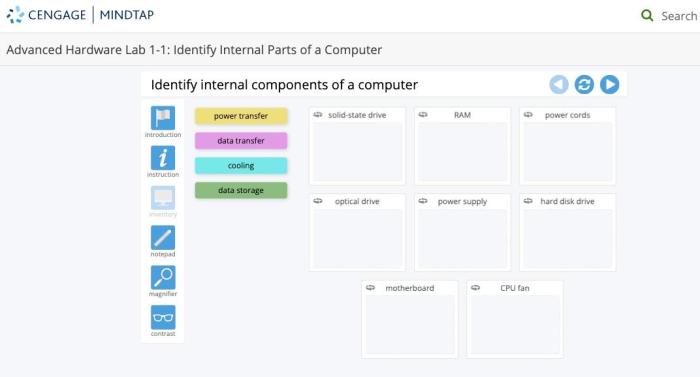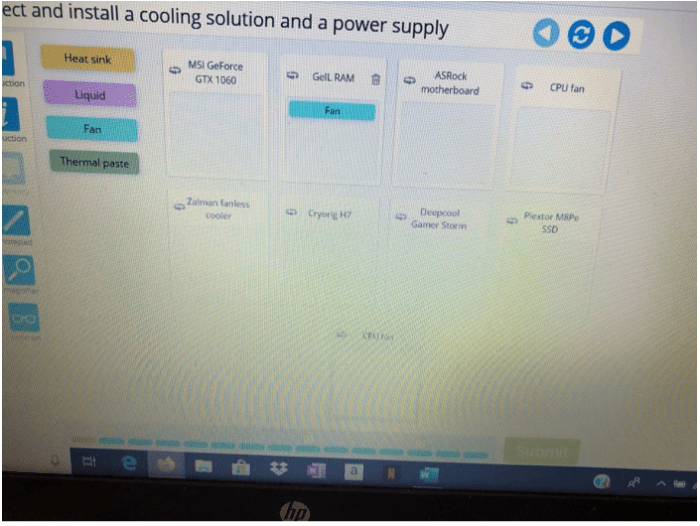Advanced hardware lab 6-2 select and install adapter cards – Embark on an exploration of advanced hardware lab 6-2, delving into the intricacies of adapter cards and their crucial role in enhancing computer hardware capabilities. This comprehensive guide will provide a thorough understanding of adapter card types, selection criteria, installation procedures, troubleshooting techniques, and best practices, empowering you to optimize system performance and maximize hardware potential.
Adapter cards, the unsung heroes of computer systems, serve as expansion modules that augment the functionality of motherboards. By adding adapter cards, you can enhance connectivity, improve graphics capabilities, boost storage capacity, and unlock specialized features, transforming your computer into a versatile and powerful machine.
Advanced Hardware Lab 6-2: Select and Install Adapter Cards

Advanced Hardware Lab 6-2 focuses on the selection and installation of adapter cards, which are essential components for enhancing the capabilities of computer systems. Adapter cards provide additional functionality, such as network connectivity, graphics processing, and storage expansion.
This topic is significant in the field of computer hardware as it enables users to customize and optimize their systems to meet specific requirements. By understanding the different types of adapter cards, their functions, and the selection criteria, individuals can make informed decisions about which cards to install to improve system performance and functionality.
Types of Adapter Cards
- Network Interface Cards (NICs):Connect computers to networks, enabling data transmission and communication.
- Graphics Cards (GPUs):Enhance graphics processing capabilities, improving the visual performance of applications and games.
- Sound Cards:Provide sound input and output capabilities, enabling audio playback and recording.
- Storage Controllers:Connect storage devices such as hard disk drives and solid-state drives, facilitating data storage and retrieval.
- FireWire Cards:Enable high-speed data transfer between computers and peripheral devices.
- USB Cards:Provide additional USB ports, allowing for the connection of more external devices.
Selection Criteria for Adapter Cards
When selecting adapter cards, consider the following factors:
- Compatibility:Ensure that the card is compatible with the motherboard and operating system.
- Performance:Determine the performance requirements of the application or task, and select a card that meets those needs.
- Cost:Consider the budget available and compare the cost-to-benefit ratio of different adapter cards.
- Specific Features:Identify any specific features required, such as multiple ports or specialized capabilities.
Installation Process, Advanced hardware lab 6-2 select and install adapter cards
- Power Down the System:Turn off the computer and unplug it from the power outlet.
- Open the Computer Case:Remove the screws holding the case and carefully open it.
- Locate an Expansion Slot:Identify an available expansion slot on the motherboard that is compatible with the adapter card.
- Align the Card:Align the adapter card with the expansion slot and gently push it down until it clicks into place.
- Secure the Card:Use screws to secure the adapter card to the case.
- Close the Case and Power Up:Replace the case and connect the power cord to power up the system.
Troubleshooting Common Issues
- No Power:Ensure that the adapter card is properly seated and the power cables are securely connected.
- Device Not Recognized:Verify that the drivers for the adapter card are installed and up-to-date.
- Performance Issues:Check if the adapter card is compatible with the motherboard and operating system, and consider upgrading the card if necessary.
- Overheating:Ensure that the computer case has adequate ventilation and consider using a cooling fan to prevent overheating.
Best Practices for Using Adapter Cards
To optimize the performance and longevity of adapter cards, follow these best practices:
- Proper Handling:Handle adapter cards with care to avoid damaging the delicate components.
- Regular Maintenance:Clean the adapter cards periodically to remove dust and debris.
- Software Updates:Keep the drivers and firmware for the adapter cards up-to-date to ensure optimal performance.
- Avoid Overclocking:Overclocking can lead to increased heat and reduced lifespan of the adapter card.
Popular Questions: Advanced Hardware Lab 6-2 Select And Install Adapter Cards
What are the different types of adapter cards?
Adapter cards come in a wide variety, including network cards, graphics cards, sound cards, storage controllers, and specialized cards for functions like video capture and RAID.
How do I choose the right adapter card for my system?
Consider factors such as compatibility with your motherboard and operating system, performance requirements, and available expansion slots.
What are some common issues I may encounter during adapter card installation?
Common issues include incorrect seating, driver conflicts, and hardware conflicts. Troubleshooting steps involve checking connections, updating drivers, and resolving any resource conflicts.
How can I optimize the performance of my adapter cards?
Ensure proper cooling, keep drivers up to date, and configure settings for optimal performance.

